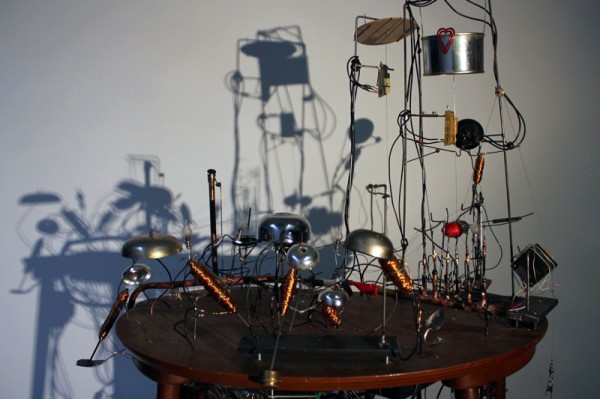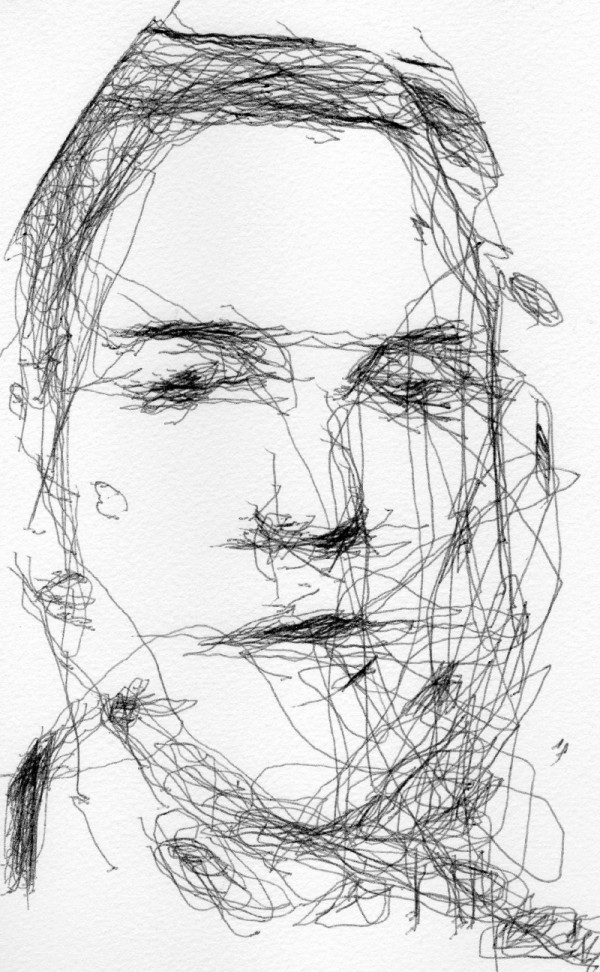al Khowarizmis Mekaniske Orkester / Piet On Ice
al Khowarizmis Mekaniske Orkester, 2014
al Khowarizmis Mechanical Orchestra
There is a small button lit by a diode. It´s mounted on an arm that sticks out of the installation. This interface reminds one of s technical museum and the start button for the model railway. When the diode is lit the audience can press the button to start a music and al-Khowarizmis Mekaniske Orkester plays a suggestion for a music, as if to say, this can also be music, or, here´s a way to organize light, sound and movement in a musical fashion.
The automated composer, the software, is constructed like a collection of dice, metronomes and grids. By pushing the button you roll the dice which sets the framework for what the music can be by numerating the fringes of the musics parameters. The mesh size of the grid is decided on and the metronomes start. The tempo is to be between 50 and 70, 30 percent of the beats are let through the grid and distribute themselves among three instruments in two layers. You get a brittle music, long intervals of silence and maybe a string or the flute has chosen longer notes, in which case you´d get a line against a background of points, a musical archetype. As an alternative the music falls apart. The intervals become too long, the tempo sinks and eventually the points fail to connect. Other times all the instruments fall into one layer, and perform what they think of as a unison. This almost unison is a batter of will to be precise which unfortunately, and efficiently, is stopped by mechanical joints, friction and the special challenges of the physical world – gravity and all sorts of resistance one has to put up with. But it can be a unison music in the listeners head. If you understand where the music wants to go and add what´s missing. Then you are gluing it together and creating a steady, limp trot.
It´s in the grey areas among possible musics that this work can become interesting. al Khowarizmis at its best lays out possible connections where the listener can weave his or her own music from the available threads. A point of departure where music is something the listener creates by actively listening structures into a sonic matter. In its utmost consequence this does away with the composer. The statement is polemic, but not without a shred of truth. And this shred is the basis for al Khowarizmis Mekaniske Orkesters music.
Roses, 2014
Piet On Ice
Piet on ice is a project in which a machine composes patterns utilizing the growth and melting of ice-roses as its material.
The work fluctuates in the dialectic between control and indeterminacy. In this space my will is constrained by a process, and the process is at the same time guided by my will. This dialectic creates a situation where the spectator is active in the sense that he or she, creates simple connections, patterns or vast worlds of association which all together form the work.
The work is a compositionproject. Not in the sense that a painting is also a composition, rather as musical composition. Something timebased, as if carved out of a silence. However much of the time, out of control, moving forward in explosive leaps or building too slow for the eye to detect.
I do not meddle on a detailed level. Although having, built the machine, made the software and balanced the process my role is that of a facilitator for the compositorial process. The work is suspended in this dialectic, between my forcefull will and the process. I can tell it when to start but not what to do. I can tell it where to go but not which way to take. I find this fruitfull, the resistance that lies in handling something unstable.
Christian Blom (1974) is a composer and artist living in Nesodden, Akershus.
Blom works with acoustic and electronic music, installations and performance art.
Blom is at the moment employed as a PhD-student at the Academy of Music in Oslo where he conducts research on strategies for transmedial composition.






